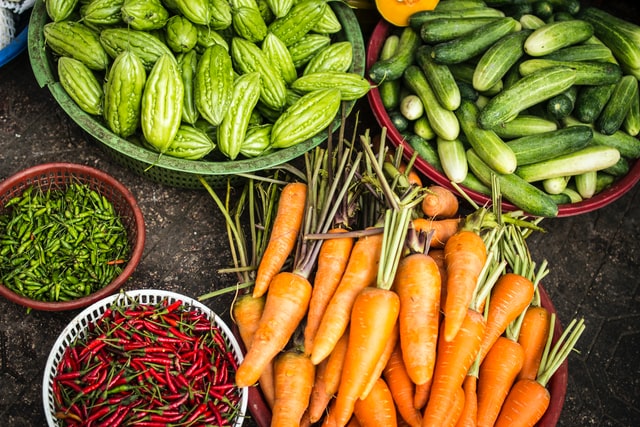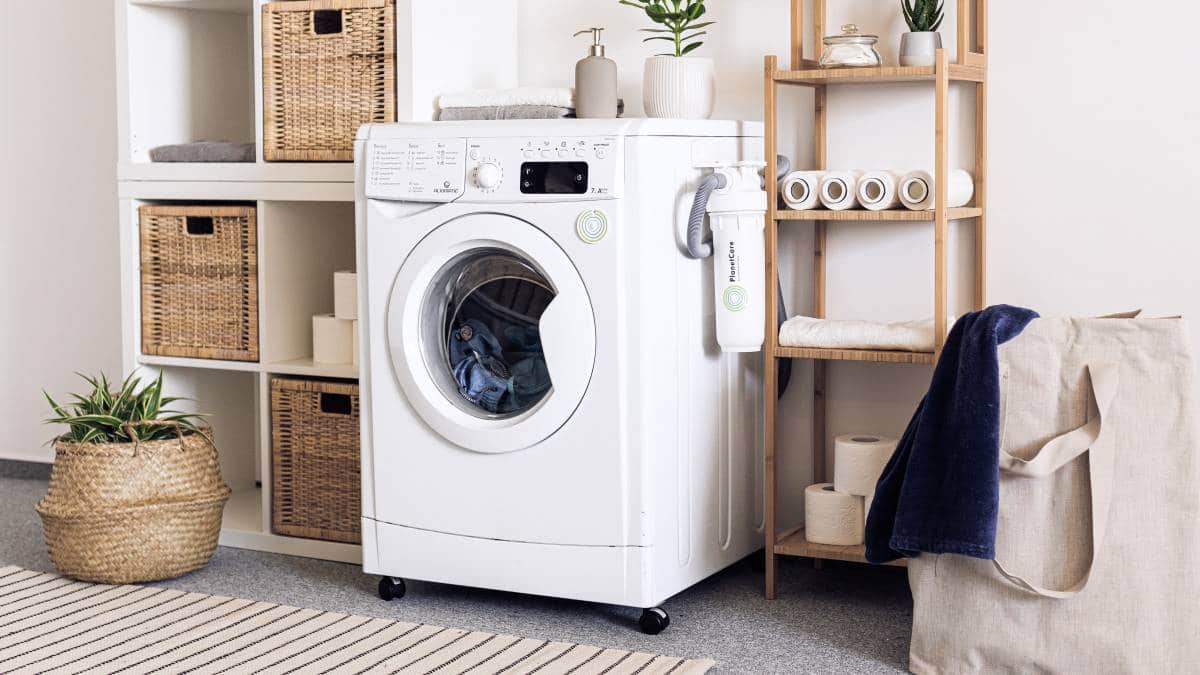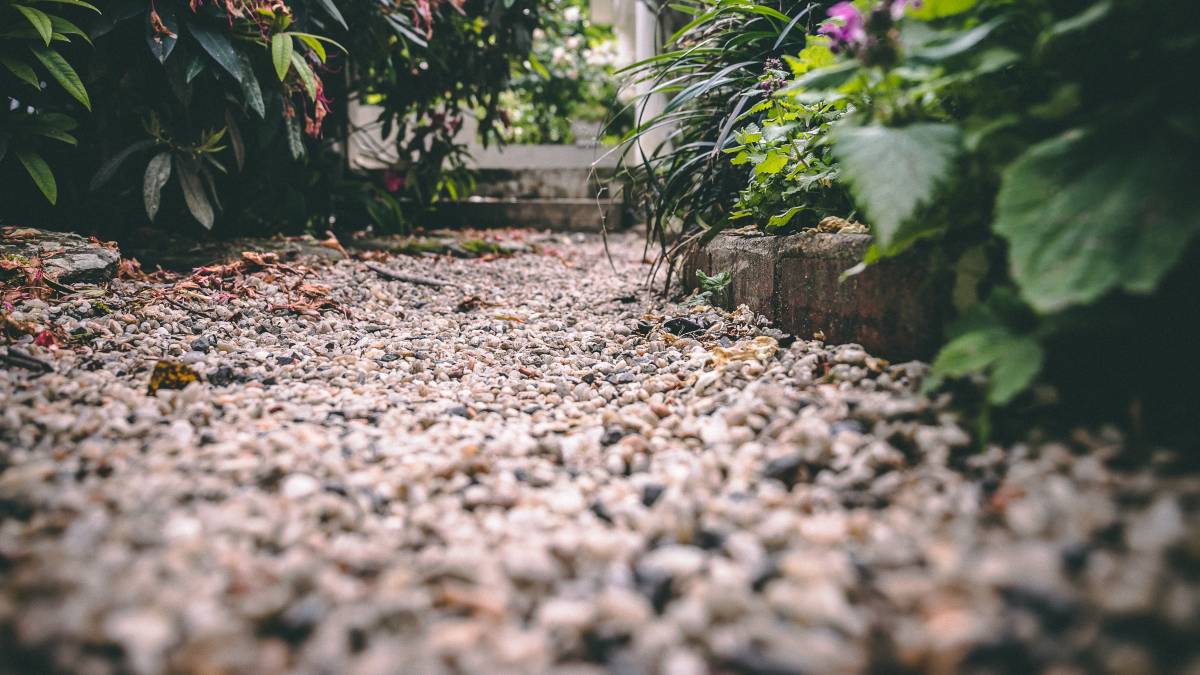Keen to grow your own fruit and veggies, but just don’t have the space at home? You’re not alone. In fact, one in eight Brits has no garden at all, let alone enough room for food crops. But that’s where allotment gardening comes in.
In this article, we’ll explore garden allotment ideas that will inspire you to make the most of your plot. Whether you’re a beginner or an experienced gardener, these ideas will help you create an amazing garden allotment that yields fresh and delicious produce.
Contents
What’s an allotment?
Allotments are small portions of local land made available to individuals for the non-commercial growing of food plants. They’re rented from the landowner (usually the local council) for a very reasonable, essentially nominal sum. And allotments enable you to grow food crops in a friendly, sociable environment, alongside allotment neighbours.
Allotment gardening has become very popular recently, as more people look to grow their own food, free of pesticides. And at the same time, enjoy a fun hobby for the whole family with guaranteed fresh air and exercise. Given the increased demand, there are often waiting lists for allotments. But it depends on where you live as some areas have plenty of vacant spots.
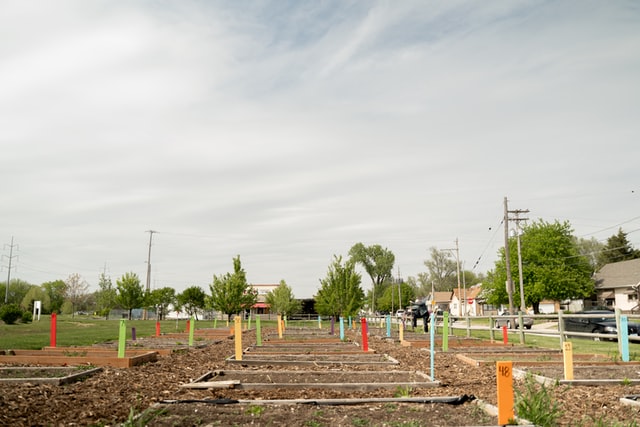
Where to start an allotment garden?
Let’s say the happy day has arrived that you are informed that you have been granted an allotment plot. Your plot will likely be wild and overgrown, but fear not; this is a good sign that your soil is fertile!
Before you get stuck into the fun part of allotment planting and watching your crops grow, you’ll need to tidy up the plot first. This involves removing old growth, fertilising well and setting up your on-site storage and equipment needs. (You’ll need gardening tools like forks, spades, a wheelbarrow, and a small shed to store everything safely).
Collaboration is a fundamental aspect of allotment gardening. Here in the UK, even if your local council has no allotment land available, you can make an application requesting allotment land if you get together with six or more others on the electoral roll.
Your local authority must consider it, although there’s no specific timeframe for them to provide land. But the more support you have from other keen potential allotment gardeners, the more persuasive your application will be.
What’s best to grow in an allotment garden?
Armed with the knowledge of what grows well in your area, your decision on what to plant will come down to what you would like your family to eat.
The amount of time you are prepared to tend your allotment is also something to keep in mind. Consider all the “cut and come again” veggies that will give you successive harvests through the same season, all from the same plant.
One of the best allotment ideas is to plan leafy greens, beet greens, salad vegetables like lettuce or celery, spinach, tomatoes, strawberries, blueberries, basil, and garlic. Perennials are also excellent allotment plants. They live for more than two years and return each spring from their rootstock.

Practical tips for allotment gardening
In this section, we’ll provide you with a couple of practical tips to make the most of your plot. From planning the layout to choosing low-maintenance crops, this allotment guide got you covered.
Plan the best layout
Before you dig, review your existing plot and draw up a plan on paper. You’ll need to think about the following considerations to layout an allotment:
- What type of soil do you have? This will determine which plants will grow well. Other plot holders can probably help you with this, but if not, you can purchase soil testing kits at a garden centre.
- What kind of plants are there already? If there are any established, you may wish to keep some crops that you’ll want to eat.
- What kind of initial work do you need to be carried out? This can include land clearing or tidying up, general lawn care, earthmoving, garden waste removal, or perhaps soil or sand delivery.
- Are there any useful existing structures such as raised beds, trellises, compost areas, pathways, sheds, greenhouses, or cold frames? Think of what you will want to add.
- The elements – how the sun travels over the plot, how the wind exposure is, and if there are any shaded areas.
- Access to water and fertiliser may be communal, or it may be your responsibility to establish systems.
After going through all these, it’s a case of deciding on the best layout for your purposes. You’ll find plenty of inspiration for allotment layout ideas online!
Choose your structures
Raised beds are trendy because they are attractive, soil quality is easier to manage, and they will ensure you automatically get nice straight pathways in between.
Create low-cost raised beds using recycled materials or buy ready-made planter boxes. Either way, you’ll love the benefits and the neat look of a raised bed allotment.

Many gardeners also recycle other kinds of materials to create beds, such as wooden pallets or old bathtubs. If you’re going for raised beds – whether the sides are constructed from bricks, wood, metal, or concrete blocks – you’ll need to make sure the edges are sturdy. This will reduce maintenance and minimise weed invasion. Adding a surrounding layer of gravel will also help prevent weeds.
If you don’t wish to install a raised bed, you might want to consider low-cost, more flexible planters made from collapsible materials. Some examples are “farm in a sack” polypropylene soft planters and fabric pots.
Figure out a watering system
Your allotment plot may share utilities like water, or it may be up to you to sort out your irrigation needs. Check with your council if you wish to install a proper water tank to collect and store rainwater. There may be subsidies, rebates, or government grants available to help with purchasing and installing water tanks.
On the other hand, you can get away with harvesting water in many different creative ways. Many people choose recycled plastic drums or similar vessels. You can always harvest rainwater from the roof of a shed, and store it in clean ex-fuel drums that are connected and fitted with a tap.
Aim for a low maintenance plot
Since you won’t be spending time daily at your allotment, you’ll want to work out ways to make sure your plot is easy to maintain. Choose low maintenance crops – ones that won’t spoil if they aren’t harvested at a crucial window in time.
Luckily, when it comes to something like watering, it’s fine to water your allotment for an hour once a fortnight, rather than trying to get there often for more frequent watering. You could even use simple tricks like sinking bottles beside the roots of your larger plants (e.g. corn), which you fill with water that will slowly disperse into the root zone.
However, if there comes a time when you cannot tend to your allotment, you could opt to hire someone to help maintain your garden.

Make use of all the space
How much space you have obviously depends on the size of your allotment. Many allotments are pretty large (typically 250sqm!), but they are also often rented out in half or even quarter size plots.
If you have a smaller allotment, you’ll want to extend your space by growing upwards and horizontally. This can be done through trellises and climbing frames, or stepped raised planters. This tiny section of an allotment makes great use of space!
Add mulch
Mulch is your friend for reducing moisture loss through evaporation, improving soil nutrients, reducing soil erosion, and minimising weed growth. You can either use organic mulch (biodegradable, such as grass clippings, cardboard, and wood chips) or inorganic mulch (e.g. river rock and gravel).
Another type of inorganic mulch that’s often used very effectively in allotments is plastic mulch, a Polyethylene film that insulates the soil.

Allotment ideas for beginners and experts
Just because you’re renting the plot doesn’t mean you can’t make cosmetic improvements to enhance your experience! You don’t have to build permanent structures, but you can go ahead and add elements that appeal to you that you can easily dismantle in the future.
If aesthetics are important to you, you might consider hiring a landscape designer.
Here, we’ve gathered 20 allotment ideas to get you started on your allotment gardening journey. There are practical tips on planting and some more decorative ideas to enhance your enjoyment of your plot. Let’s dig in!
1. Look into rooftop allotments
Rooftop allotment is a great allotment idea not only because they are already popular in other global cities but are becoming more common in the UK. Urban agriculture has developed, and landowners are looking for more ways to use city space effectively.
The advantage of a rooftop allotment is installing raised bed planters on top of existing hard flooring. There’s no need to create paths or deal with weed incursion.
2. Set up a tool storage solution
You’ll need some structure to house your garden tools securely. A small metal shed with a good padlock will be the safest bet to keep expensive equipment out of sight. Your shed area is also perfect for setting up a little nursery for propagating plants from seeds and cuttings.

A portable pallet tool station could also make life easier, especially if your allotment plot is a decent size. Who wants to be individually schlepping a bunch of heavy tools around the plot when you can wheel them all wherever you need them? At the end of a gardening session, it can be parked back in secure storage.
3. Create a play station
Allotment gardening can be a bonding experience for the whole family! But if your kids are at an age when they get easily distracted, one of the best allotment ideas is putting together a designated play area. You might want to add a sandpit or mud kitchen or some kid-sized gardening tools and buckets so they can tend to their own little plot while you’re gardening.
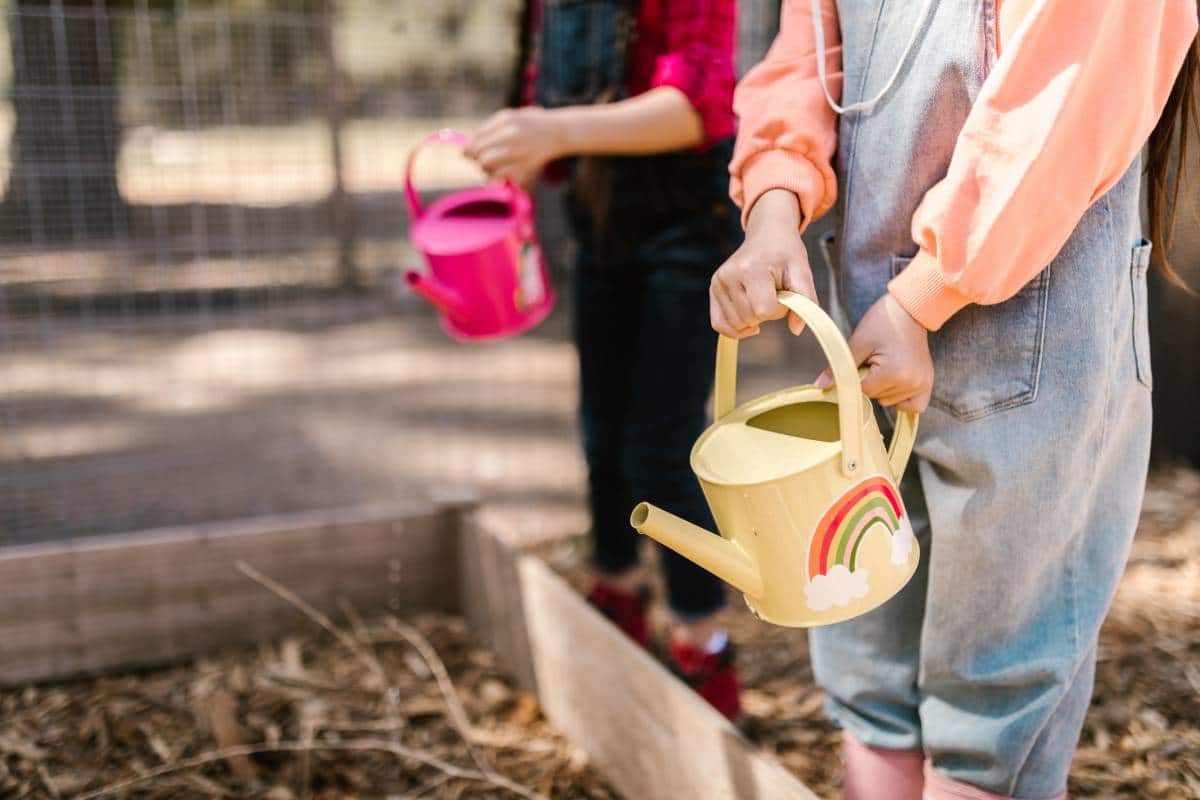
4. Craft DIY garden markers
Don’t lose track of what you’ve planted and where—always add markers to your garden. There are gazillions of tutorials on Pinterest for inexpensive, homemade garden markers that you can use in your allotment. There’s no need to spend too much money on markers because they’re cheap as chips to make.
5. Install a butterfly feeder
Setting up a butterfly feeder is another great idea to add beauty, life, and colour to your allotment plot. Butterflies add charm as they flutter around you while you work.
Butterflies are also essential for helping pollinate many plants. A feeder is simple to make (again, there are thousands of tutorials on Pinterest, so you’re sure to find one you like). You fill them with nectar and let the butterflies do the rest.

6. Plant more herbs in your allotment
Add fragrance to your allotment and improve your home cooking by growing plenty of herbs through your plot. They’re also brilliant for repelling pests (for instance, sage will deter cabbage moths). Plus, did you know that growing herbs beside other veggies will enhance the veggies’ flavour? Basil, for example, when grown next to lettuce and tomatoes, beautifully enhances their flavour.
7. Look into companion planting
Essentially, companion planting is the idea that some plants like growing near each other while others prefer not to. It’s all about complementary plant relationships and making the most of your allotment space. Benefits include better nutrient uptake, improved pest management, enhanced pollination and ultimately higher yields.

Conversely, planting members of the same plant family together means they’ll compete for soil nutrients. So it’s best to disperse them across your plot (for example, related plants like onion, garlic, leek and chives). You’ll find a wealth of information about companion planting online.
8. Build a bug attractor
Some insects are super important for gardens! They’re vital for crop pollination, and there is slime that will eat more destructive pests (or actually live inside the host pest and eat it to death…charming!).
Add a bug hotel to your allotment garden so these beneficial insects can have an inviting home. You can find ready-made kits to buy or construct one using your imagination and a range of materials suited to nesting. Furnish the “rooms” with various materials like deadwood, loose bark, and straw.
9. Create paths between beds
Building durable paths between your beds is important to provide access to all areas of your plot and to link functional areas. Never fear because you don’t need to spend a fortune on paths. Simple bark chips or inexpensive gravel paths are great. You could also use pavers to lead the way. Don’t forget to make your paths wide enough to allow a wheelbarrow through.
10. Go for that “neat” look
You can construct planters and raised beds from so many materials. If a neat-looking allotment appeals to you, square or rectangular metal planter boxes might be the way to go.
Metal choices include aluminium, galvanised steel, or even cast iron. Metal planters can be strong and look attractive against your greenery. However, you need to be careful about the sun potentially overheating the soil and damaging your plants. Make sure to use a plastic liner and always guarantee good drainage.
11. Insulate your plants with cold frames
There are many ways to extend your harvest, even if you live somewhere with a shorter growing season, and one of them is by building cold frames. You’ll often see cold frames used in allotments, as they’re a wonderful way to absorb solar energy and protect your plants in colder months. It’s similar to a greenhouse but isn’t designed for you to walk through.
A cold frame is essentially a box with a transparent lid or cover. You grow your seeds, young plants, or rooted cuttings directly in the frame before transplanting them to the garden beds. Sinking your cold frames into the ground by a foot will also enhance heat retention.
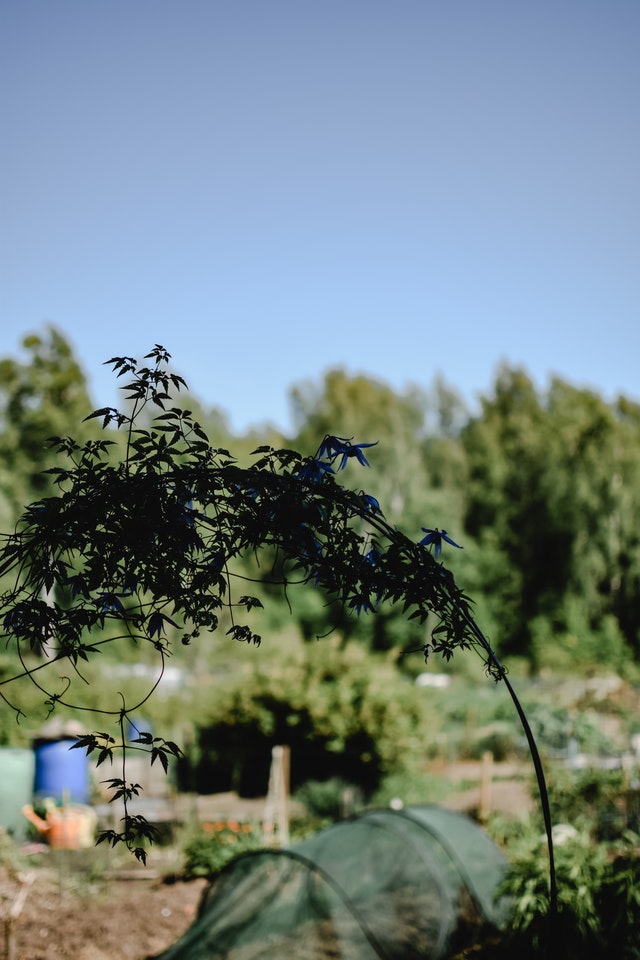
12. Create a polytunnel
Popular in allotments, polytunnels are a great economical alternative to greenhouses. They similarly protect plants from seasonal changes, dramatic weather, and pests. Polytunnels are large, elongated, walk-in tunnels with galvanised steel frames covered in plastic sheeting. They’re perfect for your lettuce, tomatoes, and berries!
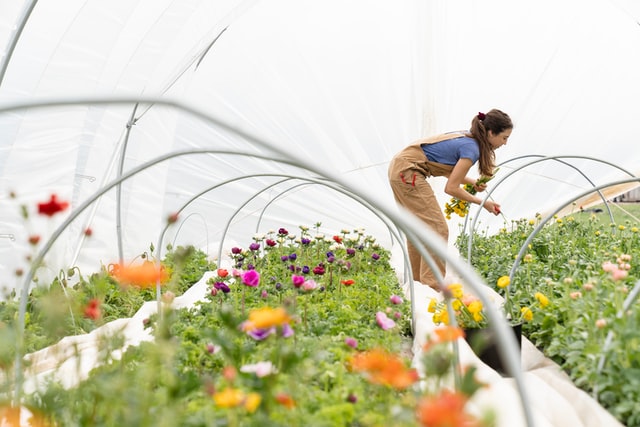
13. Consider using trellises
Make your allotment garden three-dimensional by growing crops on trellises. These always look awesome and won’t take up precious ground space. Heaps of fruit and vegetables can be grown on a trellis, such as beans, peas, cucumbers, peppers, tomatoes, berries, grapes, and even watermelons.
14. Bring your A-game
The A-frame style of the trellis is another option, commonly used for growing crops like climbing beans. Trellises and frames provide plants with support, free up ground space, and make veggies easier to pick. Not to mention, the look of plants winding their way up trellises and climbing frames is very pleasing. Here’s a simple one made of bamboo:
15. Make an arch
Another plant that loves a good trellis is butternut squash. You can even grow it to form an archway, and the heavy veggies will just dangle lightly as though defying the laws of physics. Growing upwardly saves so much ground space, creating charming spaces in your allotment. It’s definitely worth factoring into your allotment garden layout.
16. Build a DIY potato planter
Planning on growing root vegetables? Save yourself the backache of digging with a DIY raised planter designed explicitly for harvesting crops like potatoes. You can find plans for these online with detailed assembly instructions—or maybe outsource the project to a carpenter.
17. Make use of DIY cloches
Pest and disease control is an essential aspect of allotment gardening. You’ll need to check over all your plants to handle any problems regularly.
Growing plants that are known to be resistant to local diseases or pests is a good start. So is using preventative measures like wire perimeter fencing (against rabbits) or cloches and netting for insect pests. Luckily, it’s pretty easy to make your own cloches to protect your plants.
You can also purchase wire cloches for protecting plants against thieving birds, but honestly, save yourself the expense and make your own with chicken wire. There are plenty of tutorials on Pinterest, and they’re a very basic DIY.
18. Build a triple compost bin
Compost production will be part of your allotment gardening duties. Depending on the size of your plot, and whether you can join composting forces with allotment neighbours, a domestic compost bin may suffice. You might end up building an open compost bay, like a DIY triple-bay compost bin. These triple bays contain one bin for fresh scraps, one for decomposing material and one for usable compost. Note that open compost bays need the weekly turning of compost to create a hot, rapid compost and to minimise rodent breeding.

19. Create social spaces
Don’t forget to think about installing some seating – preferably under a tree or small pergola for shelter. It’s perfect for taking a break or drinking a refreshing beverage during your allotment gardening sessions. A designated space to have a sip from a thermos while chatting with allotment neighbours is great for fostering new friendships.
20. Install vertical gardening
Do you want to add a touch of modern flair in your allotment? Then you might want to explore the trendy technique of vertical gardening. By utilising trellises, vertical planters, or wall-mounted containers, you can grow climbing plants like cucumbers, beans, or tomatoes in a creative and space-efficient way. Not only does vertical gardening maximise your yields, but it also adds a stunning visual element to your allotment garden.
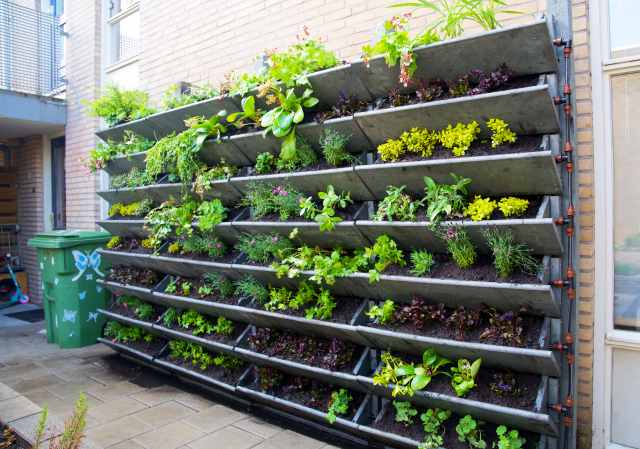
Start building your allotment garden
There you have a stack of allotment ideas that should enhance your experience of allotment gardening, and hopefully ensure a bumper harvest! Over to you – have you caught the allotment gardening bug yourself, and have perhaps already put your name down on the list with your council? Or are you an old hand at allotment gardening? If so, please share any tips and tricks you have in the comments!


